15 Items You Could Find In American Households In The 60s And 15 That Are Still There
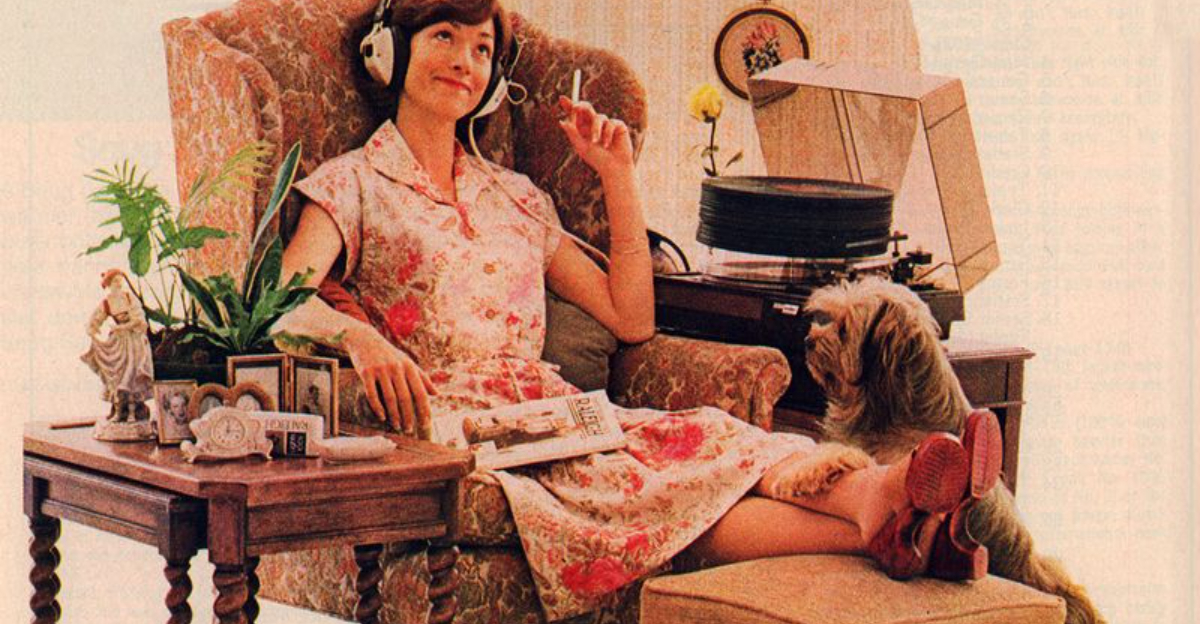
Taking a stroll through American homes today, you might be surprised to find a few familiar faces from the 1960s still hanging around—quietly rocking their vintage charm and refusing to go out of style. These aren’t just dusty antiques; they’re beloved artifacts that have stood the test of time.
Whether it’s a trusty Pyrex dish passed down from Grandma, a groovy record player spinning classic vinyl, or a cast iron skillet that could survive the apocalypse, these items are part function, part nostalgia, and 100% iconic.
Some have made a comeback thanks to retro trends, while others never left because, let’s be honest, they’re just that good.
From formica countertops to avocado-colored appliances (yes, really), the spirit of the ’60s is still alive and well in kitchens, living rooms, and garages across the country. So come along for the ride as we uncover the timeless treasures still rocking the American home scene.
1. Rotary Phone
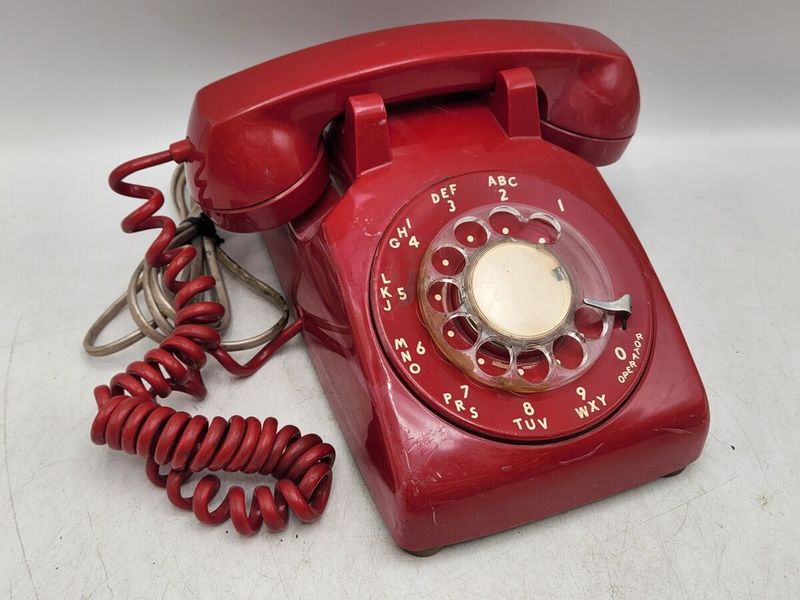
Ah, the rotary phone—a relic of patience and an exercise in finger dexterity. Dialing a number was an adventure on its own; one misplaced digit, and you’d have to start all over. It was the ultimate test of your finger’s endurance and your memory’s strength. I remember my grandmother’s phone, an elegant cream and gold number that sat prominently in the living room, its ringing a clarion call that echoed through the house.
The satisfying spin of the dial and the click-click of its return were as much a part of its charm as the curly cord that seemed to have a life of its own. My siblings and I would stretch the cord across the room, tangling ourselves up in its spirals, much to our mother’s dismay. Even today, this vintage communication device brings back warm memories of long conversations and simpler times.
In a world of touchscreens, the tactile experience of a rotary phone remains unmatched. It has a sort of stubborn charm, refusing to be swept away by the tide of technological advancement. The rotary phone, with its nostalgic twirl, still finds its place in homes where vintage flair is a cherished aesthetic choice.
2. Wood-Paneled TV Console

Ah, the wood-paneled TV console—a masterpiece of form over function. This hefty piece of furniture was more about style than screen size. Imagine a wooden monolith that commanded the living room, complete with its own set of legs. My parents’ console was a source of both pride and frustration; it looked sophisticated, but offered only three glorious channels.
Saturdays were spent huddled around its glowing screen, watching whatever the rabbit ears managed to pull in. Adjusting those antennas was a delicate art form, often involving a dance of precision and patience. The picture would flicker and fade, but when it worked, it was a moment of triumph.
Despite the occasional static and the limited options, this console was the centerpiece of family entertainment. Its wooden facade was polished regularly, a reflection of its importance in our home. Even now, the design is celebrated by enthusiasts of retro decor, a testament to its enduring appeal. Today, homes with a touch of nostalgia often have a wood-paneled TV console as a quirky reminder of television’s early days.
3. Ashtrays in Every Room
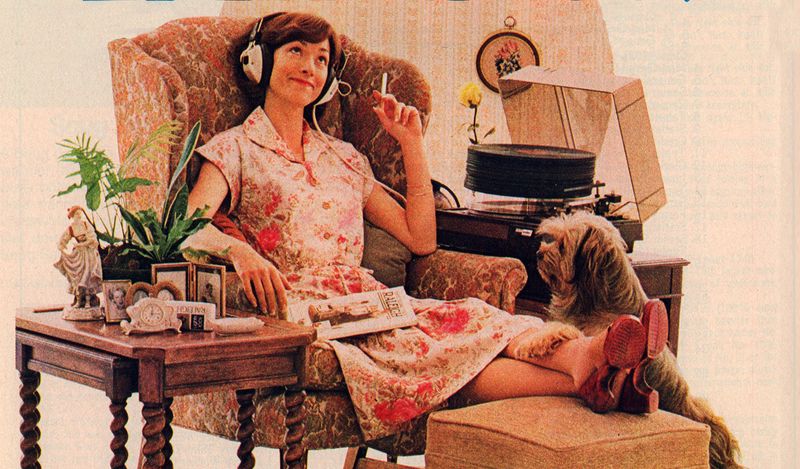
Picture this: ashtrays as ubiquitous as remote controls, a staple of every room. In the ’60s, smoking was a social norm, an activity that permeated household life. Our home had a variety of ashtrays—ceramic pieces with decorative flair, glass ones that caught the light just right.
My father had a favorite, a sturdy ceramic ashtray with a floral pattern that sat on the living room coffee table. It was a fixture at family gatherings, catching the ashes of aunts and uncles as they swapped stories and laughs. To us kids, it was a mysterious object, half forbidden, half fascinating.
These days, smoking habits have changed, but vintage ashtrays have taken on a new life as quirky collectibles. They add a touch of retro chic to modern interiors, a nod to the past without inhaling its smoke. Whether used or displayed, they bring a hint of mid-century style to contemporary homes, a testament to their persistent charm.
4. Shag Carpet
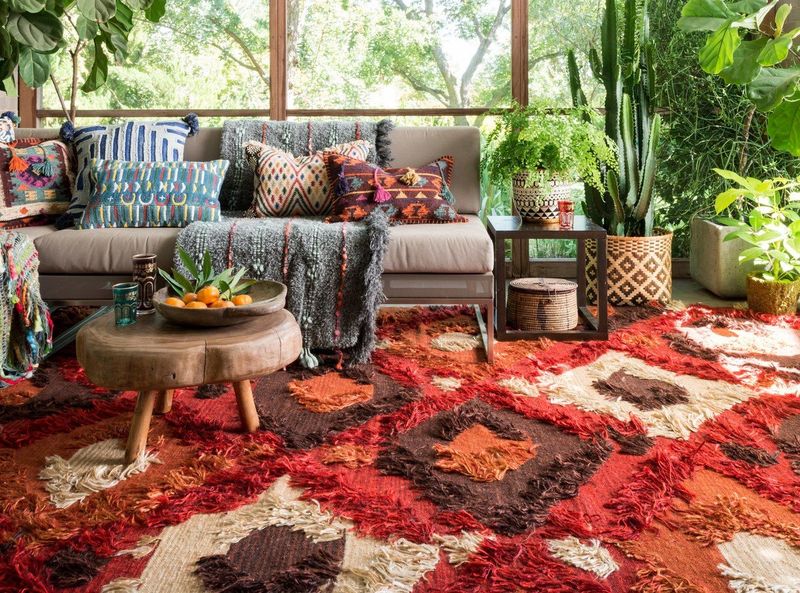
Step onto a shag carpet, and you’re sinking into a time capsule of comfort. These thick, fluffy wonders were more than just floor coverings; they were a statement. I recall the bright orange shag in our family room, a bold choice that hid spills, socks, and sometimes even a sibling or two.
Cleaning it was an adventure—vacuuming a shag carpet was like combing a giant, furry creature. But once the vacuum was done roaring through its fibers, the carpet was a soft, inviting playground once again. It swallowed sound, making the room feel cozy and intimate.
Today, shag carpets have made a comeback, embraced by those who appreciate their retro appeal and tactile indulgence. They add a burst of texture and color to a room, making them a favorite for anyone looking to infuse a space with vintage flair. Shag carpets continue to be a whimsical yet practical choice, proving that sometimes, more is more.
5. Sunburst Clock
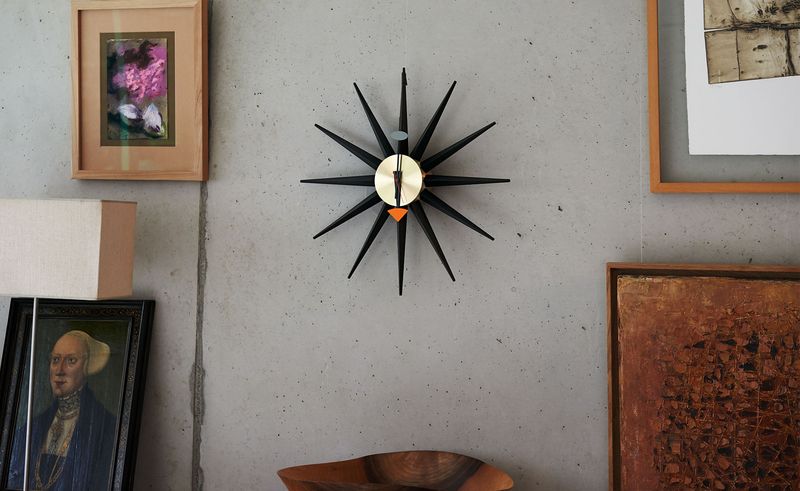
If walls could talk, a sunburst clock would surely have tales to tell. This piece of mid-century modern art was as much a timekeeper as it was a conversation piece. In our house, it hung proudly in the hallway, its golden rays casting shadows that danced throughout the day.
Its design was inspired by the atomic age—a nod to a futuristic optimism. The clock’s hands would glide smoothly over its face, a silent tick-tock marking the hours. Its very presence seemed to make the mundane passage of time something worth noticing.
Sunburst clocks still shine brightly in contemporary decor, cherished for their bold design and historical significance. They bring a touch of cosmic flair to any wall, a reminder that time, much like style, is both fleeting and eternal. This iconic design continues to be celebrated, proving that some styles truly are timeless.
6. Fondue Set

A fondue set was the quintessential accessory for every 60s dinner party, a perfect blend of novelty and sophistication. Our family’s fondue pot, a lovely red ceramic piece, was brought out for special occasions, transforming ordinary evenings into culinary adventures.
Gathered around the bubbling pot, we’d dip cubes of bread into the molten cheese, savoring each gooey bite. Conversations flowed as freely as the fondue, and laughter was as abundant as the aroma of melted cheese. It wasn’t just a meal; it was an experience, a shared moment over which bonds were strengthened.
Today, fondue sets still find a place in kitchens, a nostalgic nod to communal dining and culinary exploration. They invite people to slow down, enjoy the process, and relish the flavors. The fondue set, with its mix of function and fun, remains a charming relic that continues to delight foodies and nostalgics alike.
7. Hi-Fi Stereo System
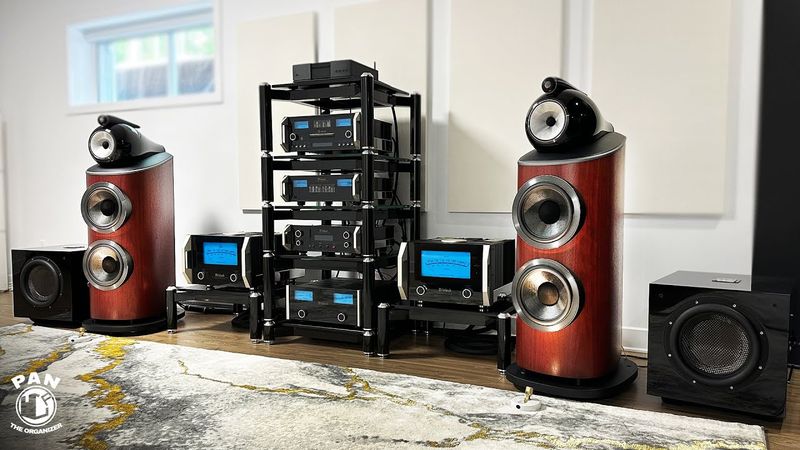
Crank up the volume on nostalgia with a hi-fi stereo system. These audio giants were a must-have for every music-loving household. I remember my parents’ system—a beast of a machine that took up half the living room, its speakers large enough to double as end tables.
Vinyl was the soundtrack of our lives, and the stereo was the DJ. Whether it was the Beatles, Elvis, or a crackling radio broadcast, the sound filled the air, rich and warm. Adjusting the equalizer was a fine art, a delicate balance between bass and treble that my father took great pride in perfecting.
Today, hi-fi systems are cherished by audiophiles and retro enthusiasts, a testament to their enduring appeal. The tactile experience of placing a needle on a record is a ritual that modern technology can’t replicate. In a digital world, the hi-fi system, with its vintage charm and superior sound quality, remains an enduring symbol of musical appreciation.
8. Aluminum Ice Trays

Aluminum ice trays were the unsung heroes of the 60s kitchen, providing a cooling clink to every lemonade and cocktail. Our fridge always had a couple on standby, their metallic forms promising refreshment on hot summer days.
Filling these trays was easy, but the real challenge came in freeing the ice. Pulling the lever required a combination of strength and finesse, often resulting in a shower of ice cubes—or worse, none at all. My siblings and I turned it into a game, competing to see who could extract the most cubes without casualties.
Today, they serve as a nostalgic nod to simpler times, appreciated for their durability and retro aesthetic. Aluminum ice trays, with their classic design and practical legacy, continue to chill beverages and memories alike, a testament to their timeless utility.
9. Recliners With Built-In Levers
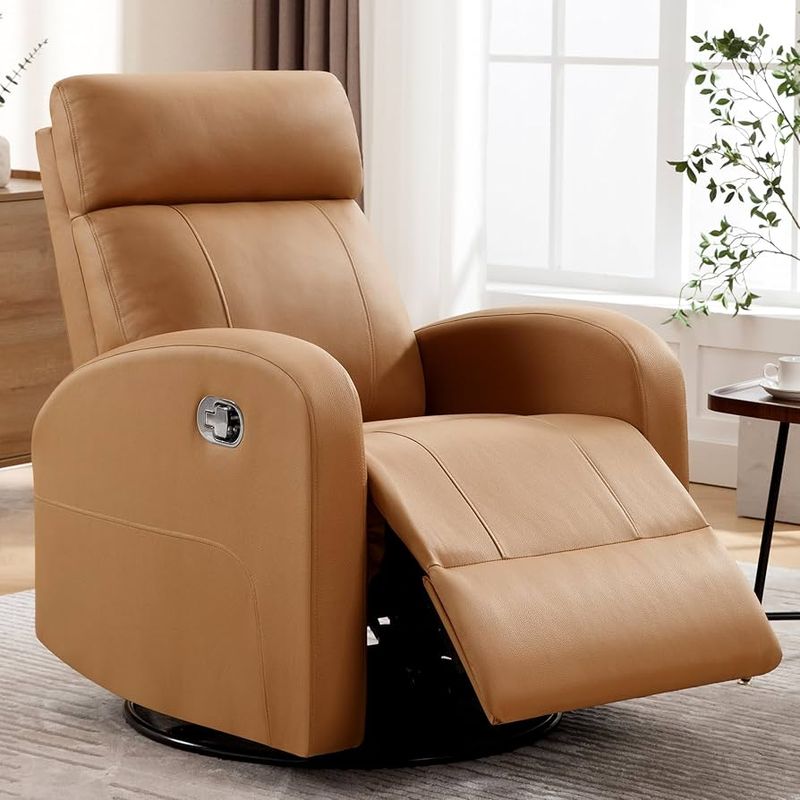
The recliner with a built-in lever—a throne of comfort for the family patriarch. In our home, it was my father’s domain, a floral-patterned marvel where he would unwind after a long day, watching Bonanza.
The lever was an engineering marvel, transforming the chair into a seat of relaxation with a single pull. It was a place of sanctuary, where even the chaos of a full house seemed to fade away. The recliner was where serious talks, family stories, and sometimes, naps took place
Today, recliners still occupy a cherished space in living rooms, their designs more modern but their purpose unchanged. They offer a blend of style and serenity, a perfect spot to relax and reflect. The recliner, with its promise of rest and its vintage vibe, remains an enduring symbol of home comfort.
10. Tupperware Party Trophies

Tupperware parties were the social events of the 60s, where neighbors gathered to marvel at the miracle of burp-seal technology. Our kitchen was a rainbow of pastel containers, each one a trophy from my mother’s hosting duties.
These parties were as much about community as they were about storage solutions. The laughter and camaraderie were infectious, with each sale punctuated by the satisfying ‘burp’ of a sealed lid. Our cupboards were filled with these colorful containers, each a testament to my mother’s sociable and entrepreneurial spirit.
Today, vintage Tupperware is cherished for its durability and design, a nostalgic reminder of community and creativity. These containers continue to serve in modern kitchens, their timeless utility and playful colors a nod to a bygone era. Tupperware, with its blend of practicality and nostalgia, remains a beloved staple in homes.
11. Milk Delivery Box

The milk delivery box was a fixture on every porch, a silent sentinel waiting for the morning’s delivery of fresh dairy. Our box was a sturdy metal container that sat beside the door, a reliable symbol of daily routine.
I remember the thrill of opening it each morning to find glass bottles of milk, their cream tops a testament to freshness. The milkman was a hero of sorts, braving the elements to ensure our cereal was never dry. It was a simple ritual, yet it held a sense of magic.
Even today, these boxes can be found on porches, repurposed as planters or storage, a nostalgic nod to a slower, more personal time. The milk delivery box, with its practicality and charm, remains a cherished piece of nostalgia, harkening back to a time when life was a bit simpler and every morning felt like a small adventure.
12. Avocado Green Everything

Avocado green was the color that defined a decade, infiltrating kitchens with its verdant charm. Our own kitchen was a sea of green, from the fridge to the stove, a testament to my mother’s love of fashion-forward decor.
This hue was more than just a color; it was a lifestyle statement. It promised modernity and sophistication, a touch of nature in the heart of the home. Even our bathroom tiles bore the green, a testament to my parents’ commitment to the color’s groovy appeal.
Today, avocado green has made a resurgence among retro enthusiasts, celebrated for its boldness and vintage appeal. It adds a pop of color and a splash of nostalgia, a reminder that some trends are too good to stay in the past. Avocado green remains a vibrant symbol of a stylish era, proving that some colors never truly fade away.
13. TV Antennas (“Rabbit Ears”)
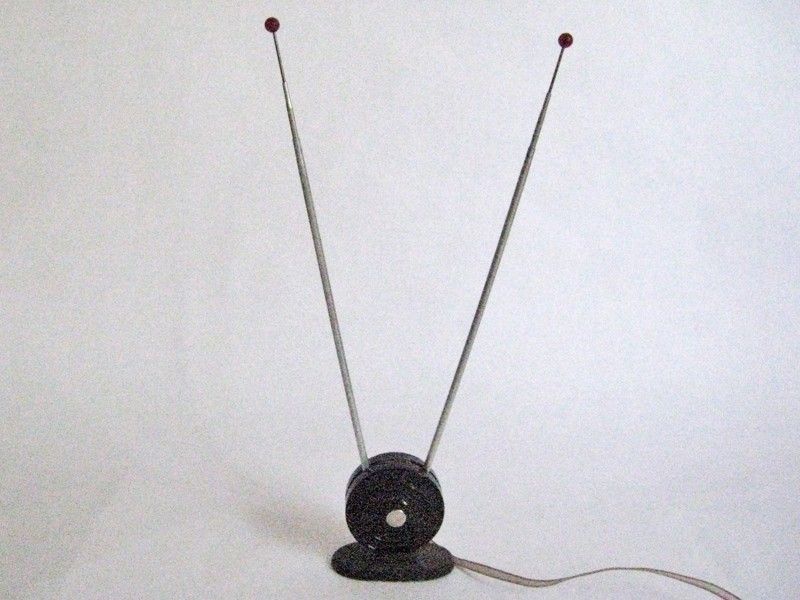
TV antennas, affectionately known as rabbit ears, were the bane and blessing of televised entertainment. Our family’s set had a pair that seemed to have a mind of its own, requiring constant adjustment to dodge the dreaded static.
Fine-tuning the reception was both an art and a science, often involving precarious balancing acts and an intuitive understanding of atmospheric conditions. The reward? A clearer picture and the sweet victory over technology’s quirks.
Today, these antennas are a symbol of a simpler time, when watching TV was a participatory activity. They bring a touch of retro charm to modern spaces, a nod to the patience and persistence of viewers past. Rabbit ears remain a nostalgic icon, a reminder of the days when television was a family affair.
14. Wall-Mounted Can Openers
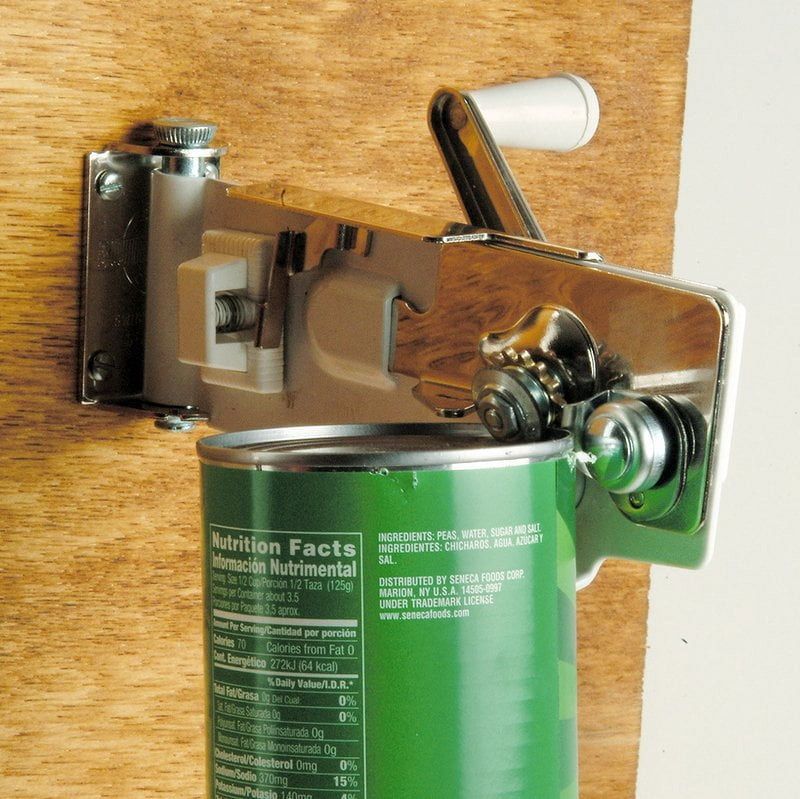
Wall-mounted can openers were the kitchen gadgets that made canned goods accessible with a flick of the wrist. Our kitchen had one nestled between the cabinets, a trusty assistant to every culinary endeavor.
With its metal body and black handle, it was a fixture in our kitchen routines. Opening a can was a satisfying ritual, the smooth turn of the handle releasing the contents within. It was a tool that made the mundane task feel like an achievement.
Today, these openers are a nostalgic nod to practicality and design, often found in retro-themed kitchens. They serve as a reminder of a time when tools were built to last, their simplicity a testament to utility over gimmickry. Wall-mounted can openers remain a beloved kitchen companion, a touch of vintage charm that continues to open doors—or cans—to culinary creativity.
15. Console Radios With Shortwave Bands

Before podcasts and streaming, there was the console radio—a gateway to the world beyond. Ours stood majestically in the living room, its wooden casing polished to a warm glow, a testament to craftsmanship and connectivity.
Tuning into shortwave bands was an adventure, a journey to distant lands without leaving the comfort of home. We’d sit around the radio, captivated by broadcasts from faraway places, the static crackle adding to the mystique.
Today, these radios are prized by collectors and enthusiasts, appreciated for their design and history. They serve as a reminder of the golden age of radio, a time when storytelling and sound painted vivid pictures. Console radios remain a cherished artifact, bridging the gap between then and now, a testament to the enduring power of sound.
